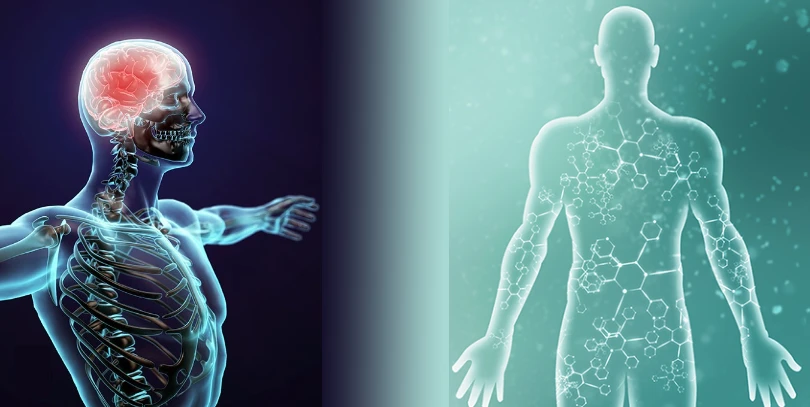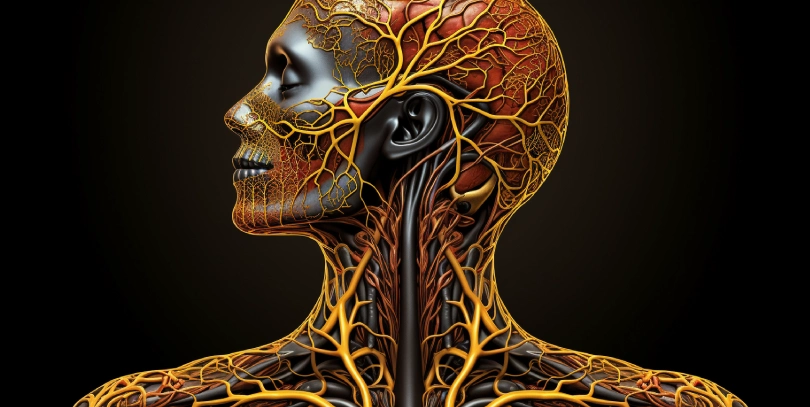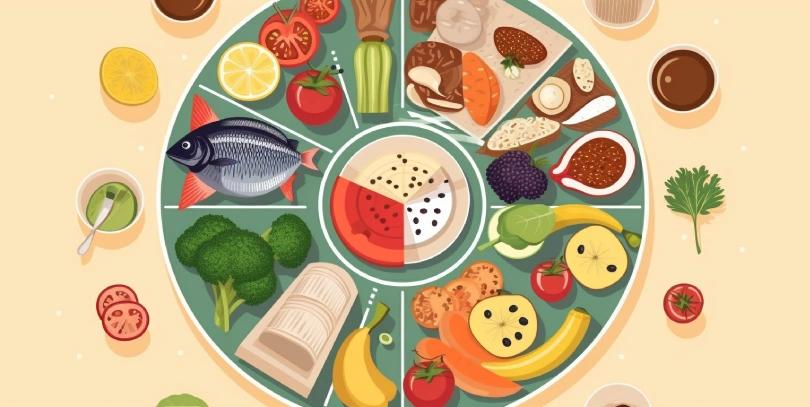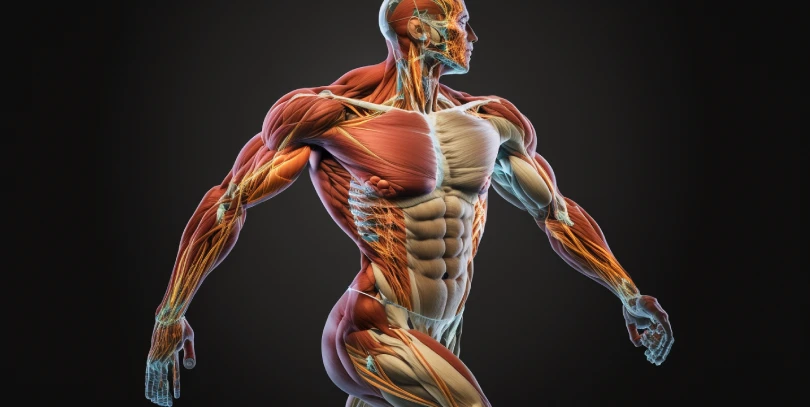The human body is an incredible machine, capable of amazing feats and complex processes. No wonder it continues to amaze us with its secrets and capabilities. From the strength of our bones to the efficiency of our lungs, there are so many facts about the human body that most people are not even aware of.
In this article, we take a look at 30 amazing facts about the human body that will make you look at yourself in a new way.
- Every second our brain takes in 11 million bits of information, but at any given time it is consciously taking in 40 bits of that information! This means that most of the information we receive daily is processed by our subconscious mind, helping us make decisions and forming instinctive responses to various stimuli. Along with this amazing achievement, our brains have an incredible memory capacity – we can store up to 2 petabytes (2 million gigabytes) of memory!
- The average adult body consists of 206 bones. This represents about 15% of the total weight of the human body. Bones provide structure to the body and protect internal organs from injury. They are held together by ligaments and muscles.
- The smallest bone in the human body is in the ear and is called the stirrup or stirrup – it is only 3 mm long!
- Human bones are four times stronger than concrete and can withstand up to 18 tons of force! Because they contain minerals such as calcium, phosphate, and magnesium, which give them strength and also help regulate hormone levels and hematopoiesis, they provide us with the structural support we need as well as vital metabolic functions.
- The average human heart beats at about 70 beats per minute, although this can vary greatly depending on age, health, and activity level. A healthy human heart can beat up to 100,000 times a day!
- The human heart pumps about 7,571 liters of blood every day! It helps keep us alive by delivering oxygen and nutrients to our cells and organs for energy production. It also helps remove waste substances, such as carbon dioxide, from the body – a process critical to maintaining homeostasis!
- The average adult male is 175 centimeters tall and the average adult female is 162 centimeters tall. Height varies greatly between people because of genetics and lifestyle choices such as diet and exercise.
- The digestive system consists of several organs, including the stomach, intestines, liver, gallbladder, and pancreas. Together, they help break down food into its smallest parts so that it can be digested by the body for energy and nutrition.
- The stomach absorbs an incredible 80 percent of the water we drink, which usually takes less than 20 minutes! It works by breaking down food particles into molecules small enough to be absorbed into the bloodstream, providing nutrients to your entire body, and ensuring that you stay healthy, strong, and functional all year round. But did you know that saliva plays an important role even before food enters your stomach? Because the digestive process starts earlier, saliva allows enzymes to break down starches, fatty acids, proteins, vitamins, and minerals more easily, and therefore they are absorbed much faster!
- Each lung in the human body contains more than 300 million tiny air sacs called alveoli, which are responsible for exchanging oxygen with carbon dioxide in the bloodstream during inspiration and exhalation.
- An adult has approximately 1.5 to 2 square meters of skin, which covers the entire body. The skin helps regulate temperature by producing sweat when it gets too hot, or by constricting blood vessels when it is too cold outside to keep heat inside our body.
- One kidney has 1 million individual filters that work together to clean our blood every 30 minutes, removing more than 1 liter of waste from our body daily! Amazingly, the kidneys also help regulate salt levels in the body to maintain a balanced concentration of electrolytes, which aids in muscle contraction during physical activity, as well as water retention in key areas such as the legs or arms.
- The average human body contains enough iron to make a 7-inch nail! Iron helps create red blood cells that carry oxygen throughout the body and also plays an important role in many enzymatic reactions within cells; without it, we could not maintain healthy levels of energy production or healthy muscle tissue, which allows us to stay fit and active throughout life!
- The human eye is capable of distinguishing 10 million different colors and detecting even the smallest amount of light! As one of the five senses, it plays a huge role in our perception of the world around us if you look at something up close, you will notice thousands and thousands of details compared to what you see from afar, thanks to its incredible resolution, which allows you to get incredibly sharp images even at very close magnification!
- Every 26 seconds a new baby is born somewhere in the world! Babies are equipped with many amazing features such as reflexes that help them survive the first few months outside the womb.
- Our eyes contain photoreceptors called rods and cones, which allow us to distinguish color and light, respectively. They also contain muscles that allow us to focus our vision on objects near or far from us.
- Humans have seven cervical vertebrae in their necks, which give them the mobility that other species don’t have-we can turn our heads 180 degrees from side to side!
- Our brain contains about 100 billion neurons – that’s more than all the stars in our Milky Way galaxy! These neurons transmit electrical signals throughout the body, allowing us to think, experience emotions, learn, remember, move, feel sound, taste food, see color, smell aromas, and more!
- Humans have the largest brain compared to the size of their bodies than any other animal species on Earth.
- The human brain continues to grow until it reaches its maximum size in the third or fourth decade of life.
- Each person has a unique set of fingerprints by which they can be identified no matter where they are in the world.
- Another amazing fact about the human body is how it recovers from injury or illness. Our body has an incredible ability to heal itself through a process called regeneration. When damage occurs to any part of the body, stem cells are released from the affected areas. These stem cells can then transform into any type of cell to replace the injured or damaged cells at the site of the injury. It’s amazing how much repair work our bodies can do on their own! In some cases, these regenerative processes are so powerful that they can even repair serious injuries such as broken bones or loss of limbs!
- The average adult has about five million sweat glands located all over the body.
- The average human skin is 2 millimeters thick, which is 16% of our total body weight. This provides us with waterproof protection from harmful UV rays and at the same time permeable enough to allow moisture to escape, allowing us not to overheat during exercise or warm weather! It also protects us from everyday injuries such as bumps, scrapes, bruises, and cuts, while also acting as a sensory organ, allowing us to feel senses such as touch, temperature, pressure, and more!
- Our bodies contain enough water to fill a 38-liter container.
- We can recognize over 10,000 different smells!
- There are over 600 muscles in the human body – twice as many as in gorillas! These muscles work together with nerves connecting them, so that signals sent by the brain make them contract, which leads to movement – without them basic tasks like walking, running, jumping, dancing, etc. would not be possible. They also play an important role in shaping traits such as facial expression, allowing us to express emotion in a way that words alone could never do!
- The human body contains over 37.2 trillion cells, each with its purpose and function. From maintaining neurological communication to enabling muscle movement, these cells work together in harmony to ensure that our bodies function optimally. Each cell has a nucleus that carries our genetic material, which determines factors such as hair and eye color, and organizes our proteins and enzymes for metabolism.
- The human body has five senses-seeing, smelling, hearing, tasting, and touching-but the number of receptors in the body is much greater-an estimated at 20 million or more. These include specialized nerve endings capable of recognizing different kinds of heat, pressure, vibration, and movement. This amazing array of receptors helps us feel and interact with our environment.
- Our brain is a truly amazing organ; not only does it control our thoughts and emotions, but it also contains billions of neurons that facilitate communication throughout our bodies. Neurons are connected by synapses that help neurons exchange information and create memories. This makes the human brain one of the most complex structures in the universe!
Sources:






